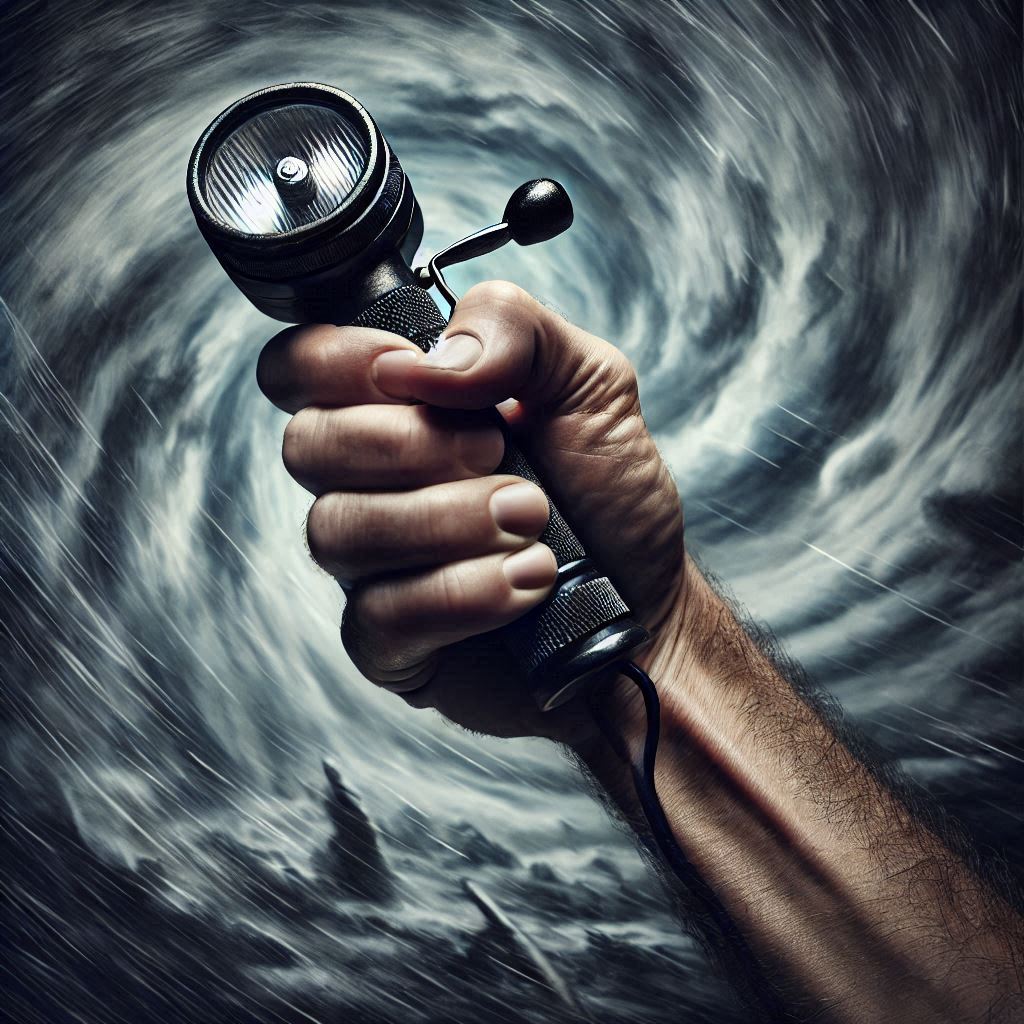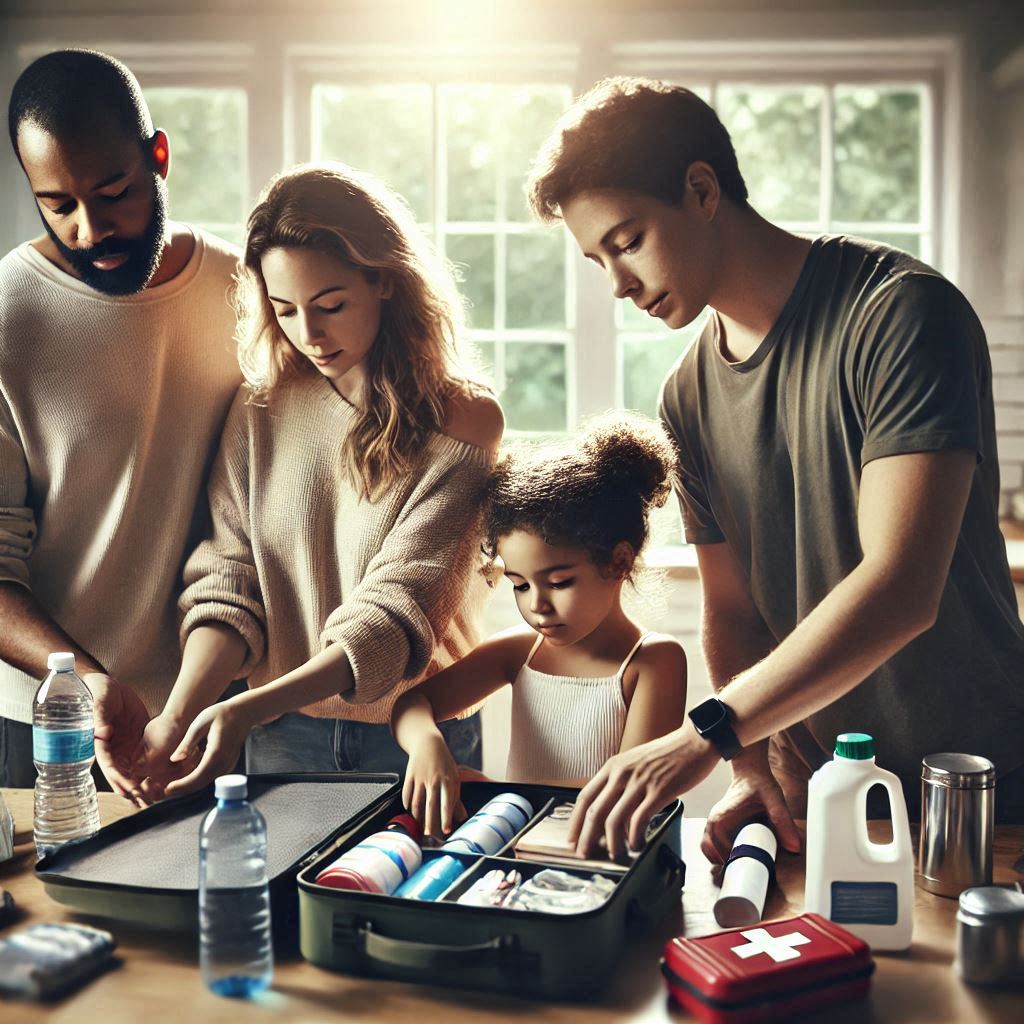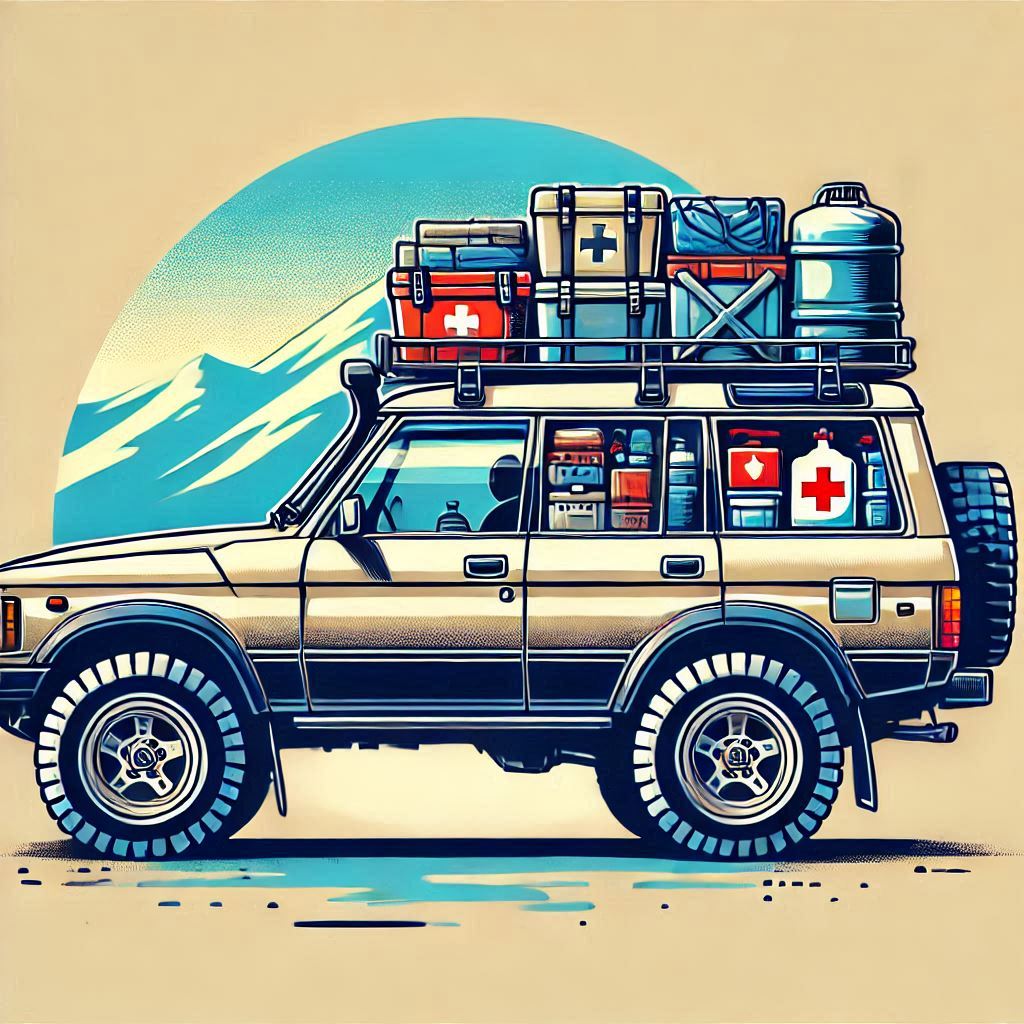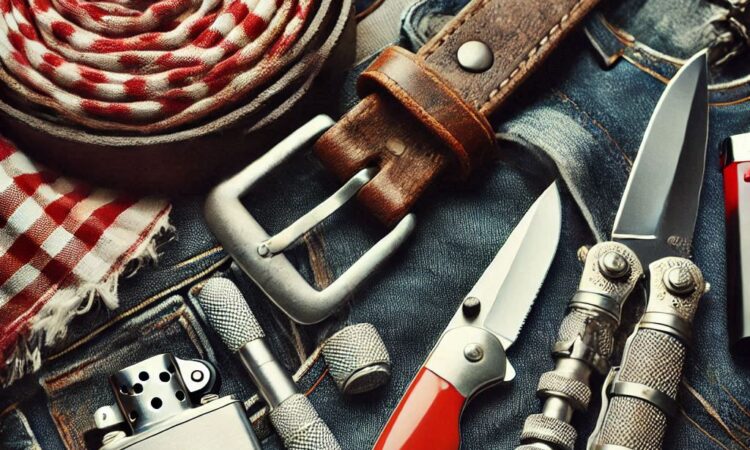Want to feel like a superhero, ready to tackle any emergency? You need an emergency preparedness plan! Keep reading for all the in-depth info you need to make your own personalized plan that’ll help you and your loved ones stay safe.

What is Emergency Preparedness?
Emergency preparedness is having a plan and the right tools to handle anything that comes your way. Think of it as being a superhero, ready to tackle any challenge!
Types of Emergencies
Emergencies come in all shapes and sizes:
- Natural Emergencies: Hurricanes, floods, earthquakes, blizzards, wildfires.
- Man-made Emergencies: Fires, dangerous situations involving people, chemical spills.
Be prepared for the types of emergencies that are most likely to happen where you live, learn, work, and play.
Hazard Assessment in Emergency Preparedness
Before making your awesome plan, play detective and do a hazard assessment. Look around your home, school, and community to spot potential dangers.

Keep It Simple
Emergencies come at the worst possible times, and having a simple set of adaptable tools with you at all times can make the difference between survival and disaster. Here’s a list of items to carry for emergency preparedness:
- Lighter: Useful for starting fires in emergencies.
- Kerchief: Can be used for bandages, carrying items, as a sling, for tourniquets, as a sweatband, or even a washcloth.
- Pocket Knife: Handy for cutting or as an improvised pry bar.
- Sturdy Belt: Useful for securing items and can serve multiple purposes.
Keeping your emergency preparedness plan simple ensures you can move quickly and efficiently during emergencies.
Create a Family Emergency Preparedness Plan
Ready to make your superhero plan? Create a family emergency preparedness plan, pack a go-bag, and learn some self-defense moves.
While you are making your emergency preparedness plan, consider the information in our Risk Assessment article.
Communication is Key!
Decide how your family will contact each other if separated:
- Pick a special contact person who lives far away, like a grandparent or aunt, and everyone calls them to check in.
- Use text alerts and emails.

Emergency Preparedness Meeting Place
Choose a safe spot where your family can meet if you have to leave your home:
- Could be a neighbor’s house or a landmark in your community.
Emergency Preparedness Escape Routes
Draw a map of your home and mark two ways out of every room.
Shelter Plan for Emergency Preparedness
Identify safe places in your home to hide if there’s a dangerous storm or something scary happening outside.
Pack a Go-Bag for Emergency Preparedness
It’s like a superhero’s utility belt, packed with everything you need to survive for a few days if you have to leave your home. Here’s what you’ll pack for emergency preparedness:
- Water and food that doesn’t need to be cooked, like granola bars and canned fruit.
- A first aid kit with all the essentials—bandages, antiseptic wipes, pain relievers.
- Any medications you take regularly.
- A flashlight and extra batteries so you can see in the dark.
- Important papers, like copies of your IDs and insurance cards, in a waterproof bag.
- Some cash and a credit card in case the stores aren’t working right.
- A whistle to signal for help.
- Things to keep you clean, like a toothbrush and toothpaste.
- A cozy blanket to keep you warm.
- A dust mask to protect your lungs if the air is smoky or dusty.
- A multi-tool or a pocketknife—because you never know when you’ll need one.
- Anything else special you might need, like baby supplies or things for your pets.
Home Security for Emergency Preparedness
Let’s make your home a fortress! Home security is super important for keeping you safe, especially during emergencies. Here are some emergency preparedness tips:
- Strong locks: Make sure it’s hard for anyone to get in without permission.
- Extra protection: Add bars or special film to doors and windows.
- Motion sensor lights: They turn on when someone walks by, so it’s harder for anyone to sneak around.
- Valuables: Don’t leave valuable things where people can see them through the windows.
- Well-lit exterior: Ensure there are no dark, scary corners.
- Utilities: Know where the fuse box and water shut-offs are.
- Surge protectors: Save electronics from power surges.
- Security system: Consider getting a home security system with an alarm.
Stay Informed and Ready for Emergency Preparedness
Stay informed and make sure you’re always ready for emergencies:
- Know the types of emergencies that could happen in your area and what to do in each situation.
- Sign up for alerts from local government and agencies like FEMA and the National Weather Service.
- Watch the news or check online for updates, especially during storms or other events.
- Have a battery-powered or hand-crank radio for power outages.
Practice and Update Your Emergency Preparedness Plan
Practice your emergency preparedness plan with your family and check your go-bag regularly to ensure everything is up-to-date. Replace expired items like food and medications.

Emergency Preparedness FAQs
What is an Emergency Action Plan (EAP)?
An EAP is a written document that outlines the procedures an organization will take in the event of an emergency. It should include information on evacuation procedures, shelter-in-place procedures, first aid and medical response, and communication protocols.
Am I required to have an Emergency Action Plan?
Whether or not you are required to have an EAP depends on a number of factors, including your industry, the size of your company, and your local regulations. You should consult with OSHA or your local authorities to see what applies to you. However, it’s always a good idea to have an EAP in place, even if you’re not required to, as it can help to protect your workers and your business in the event of an emergency.
What are the most important steps to take in preparing for an emergency?
First, make a plan. That includes knowing the types of emergencies likely to happen in your area and planning for them. Next, build a kit with enough supplies to get you through at least 72 hours after a disaster. Last, be informed about hazards, warning systems, and local resources.
How can I ensure my family’s safety during an emergency?
The best way to keep your family safe is to create and practice a family emergency preparedness plan, make sure at least one person in your home knows first aid and CPR, and secure your home to mitigate potential hazards.hazards.
Items for Emergency Preparedness
Here’s a list of items you can find on Amazon.com to help keep yourself safe in an emergency:
- LifeStraw Personal Water Filter – Great for hiking, camping, travel, and emergency preparedness.
- Energizer AA and AAA Batteries – Essential for powering flashlights and other devices.
- Emergency Crank Weather Radio – Includes a flashlight, cell phone charger, and SOS alarm.
- BleedStop™ First Aid Powder – For blood clotting and trauma kit needs.
- Survival Kit with Molle System Compatible Bag – Includes first aid kit and emergency tent.
- Emergency Glow Sticks – Great for survival gear, camping lights, and power outages.
- Fire Starter with Paracord and Whistle – Handy for camping, hiking, hunting, and emergency rescue.
- Reliance Products Aqua-Tainer 7 Gallon Water Container – For storing water.
- Emergency Mylar Thermal Blankets – Perfect for survival kits, camping, and first aid.
- Etekcity Camping Lanterns – Useful for power outages and emergency lighting.
- Ready Hour Emergency Meal Entrées – Non-perishable meals with a 25-year shelf life.
- Prepared Hero Emergency Fire Blanket – For fire suppression in the kitchen.
- Scrubzz Disposable Rinse Free Bathing Wipes – All-in-1 single-use shower wipes.
- 72 Hour Emergency Kit – Includes first aid kit, survival blanket, emergency food, and more.
These items can help you stay prepared and safe during emergencies. If you already have these items, that’s fantastic. If not, either see what you can do to adapt what you do have that serves the same purposes. For convenience, though, we have included links for each of the items for easy reference. These are affiliated links, so we do get a small portion of each purchase, but that’s how we can continue to produce these articles for you.
Bibliography
- American Red Cross. “Disaster Preparedness Plan | Make a Plan | Red Cross.”
- American Red Cross. “How to Prepare For Emergencies | Be Red Cross Ready | Red Cross.”
- Dallas College. “Personal Safety – Business Continuity Office – Dallas College.”
- FEMA. “How to Prepare For Emergencies | Be Red Cross Ready | Red Cross.”
- FEMA. “Make A Plan | Ready.gov.”
- FEMA. “Plan Ahead for Disasters | Ready.gov.”
- FEMA.
- National Safety Council. “Emergency Preparedness Home – National Safety Council.”
- New York State Department of Health. “What is emergency preparedness?”
- Occupational Safety and Health Administration. “Emergency Preparedness and Response | Occupational Safety and Health Administration.”
- Occupational Safety and Health Administration. “Emergency Preparedness and Response: Getting Started | Occupational Safety and Health Administration.”
- Penn Public Safety. “Emergency Procedures | Division of Public Safety.”
- “Safety vs. Emergency Preparedness | AgritourismReady.”
- Stony Brook University. “Personal Safety | Emergency Management.”
- U.S. Department of State. “Personal Preparedness Planning – United States Department of State.”
- University of California, Santa Cruz. “Personal Preparedness – Office of Emergency Management.”
- Wiki Conservators. “Health & Safety: Health and Safety in Emergency Response – MediaWiki.”

2 comments